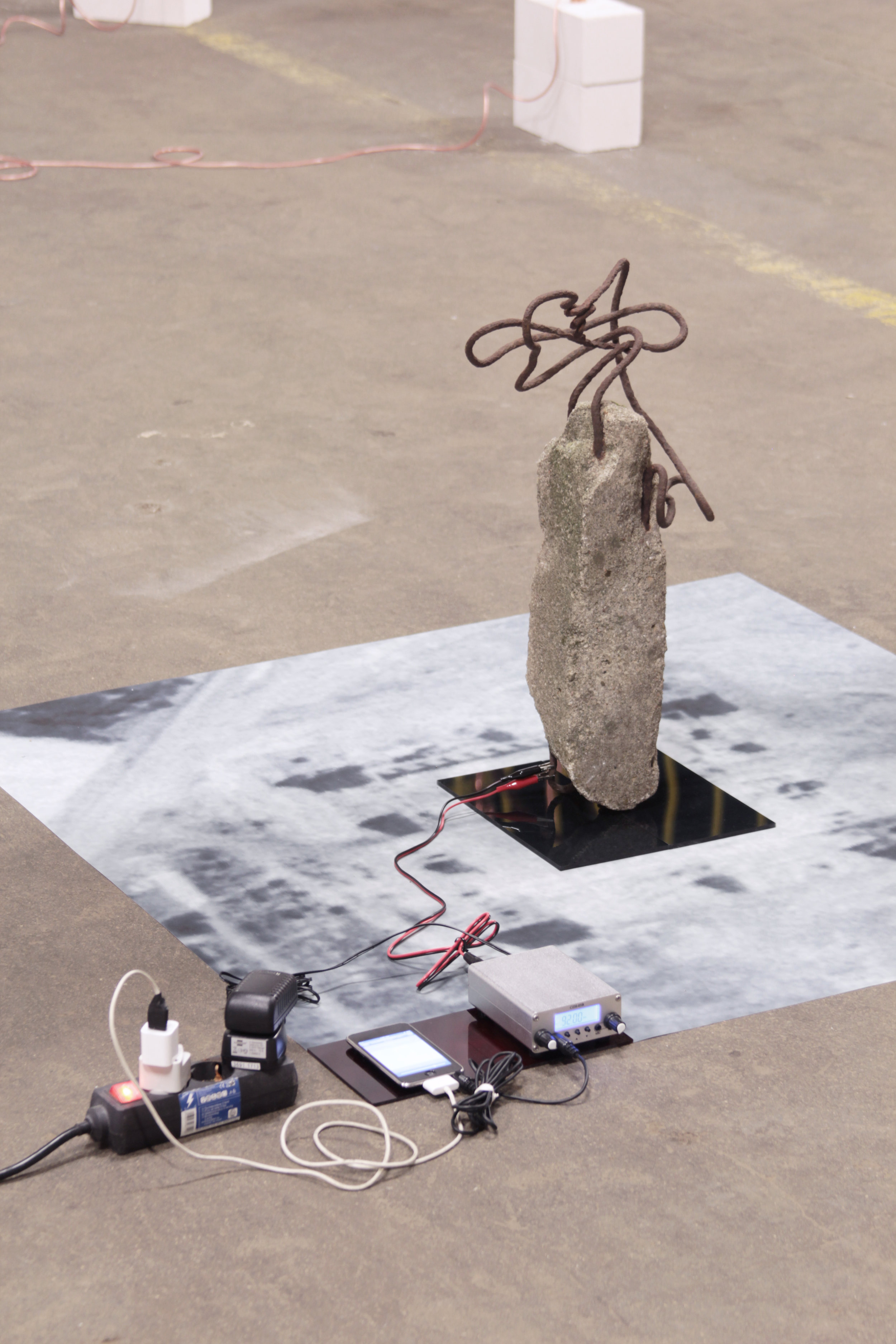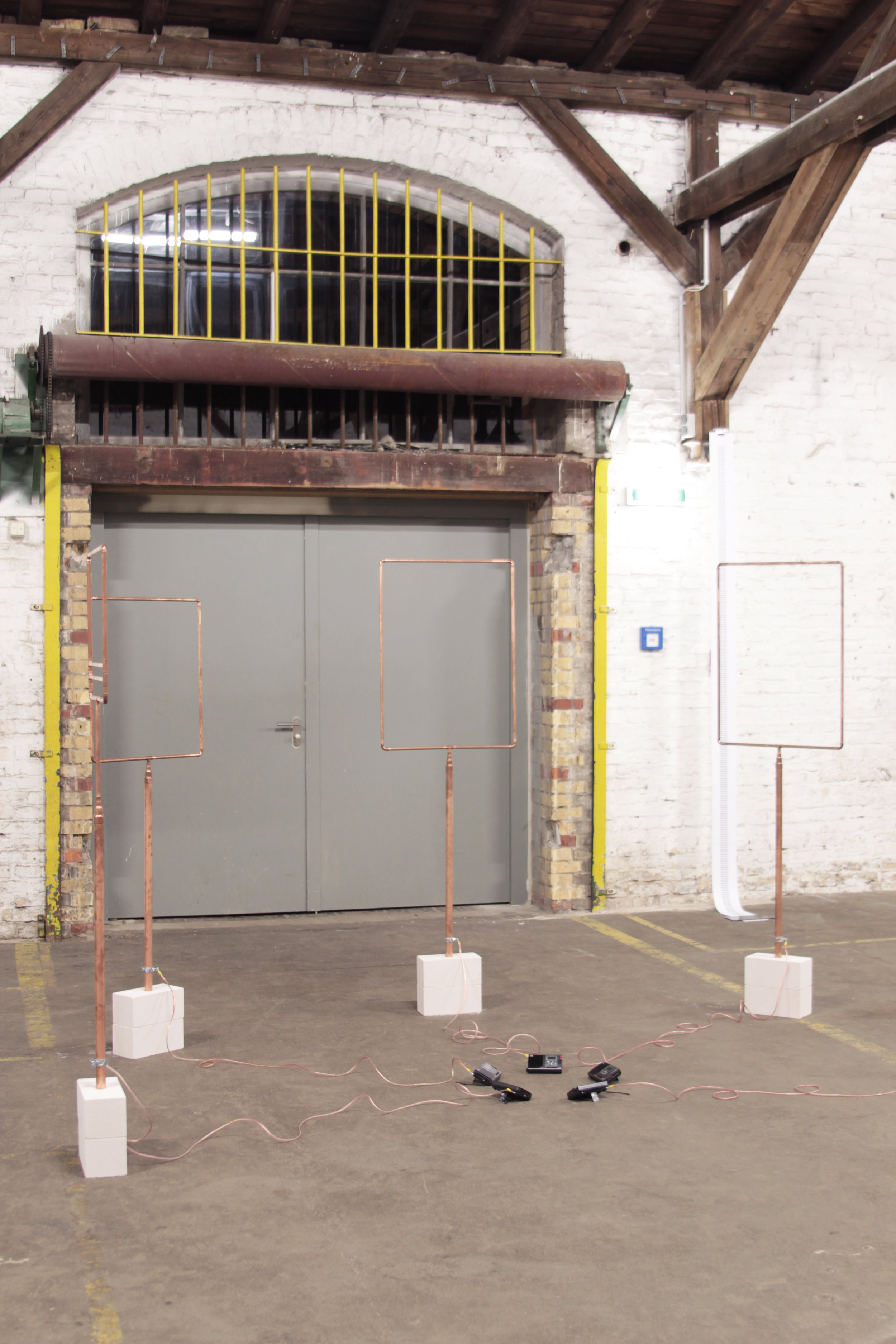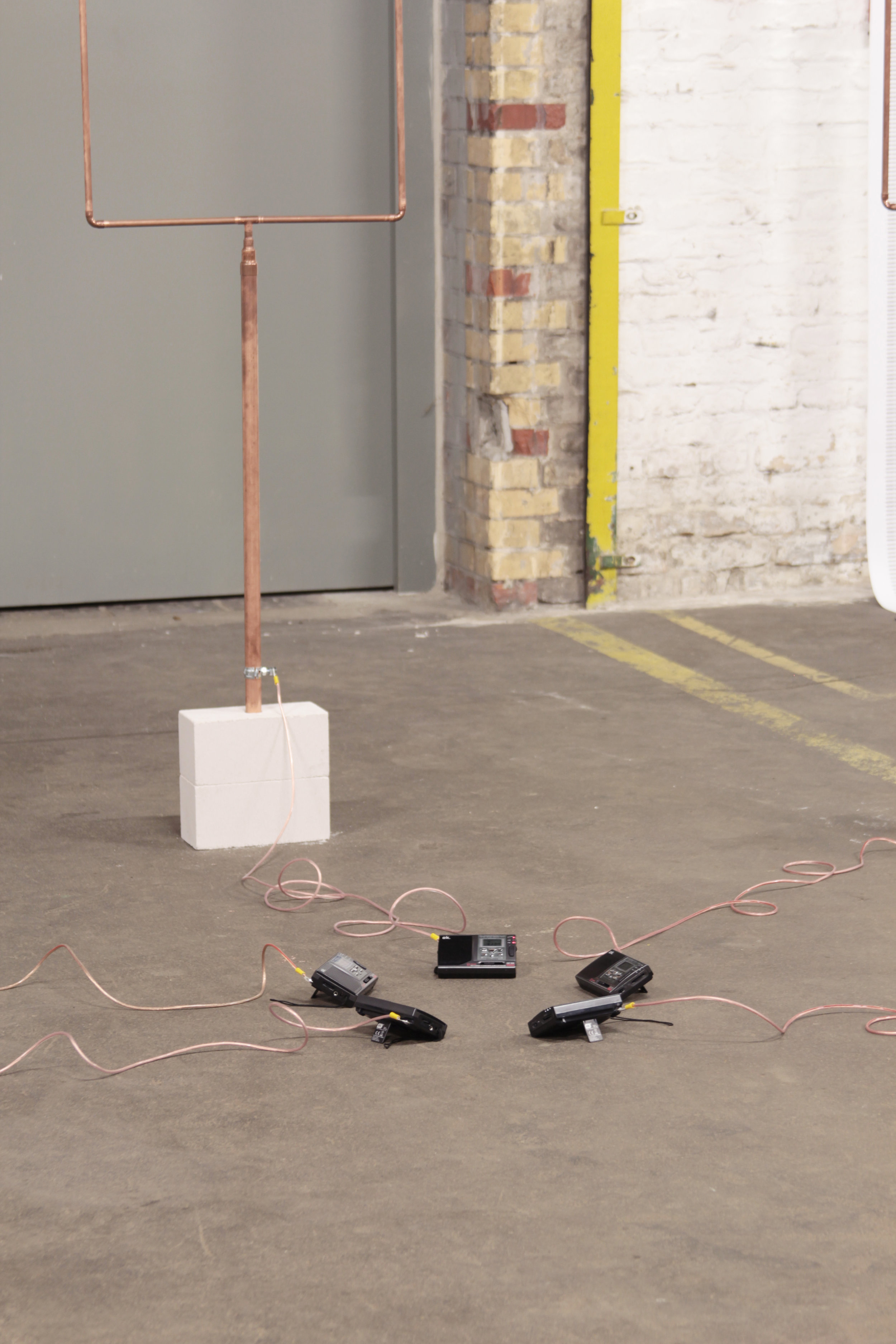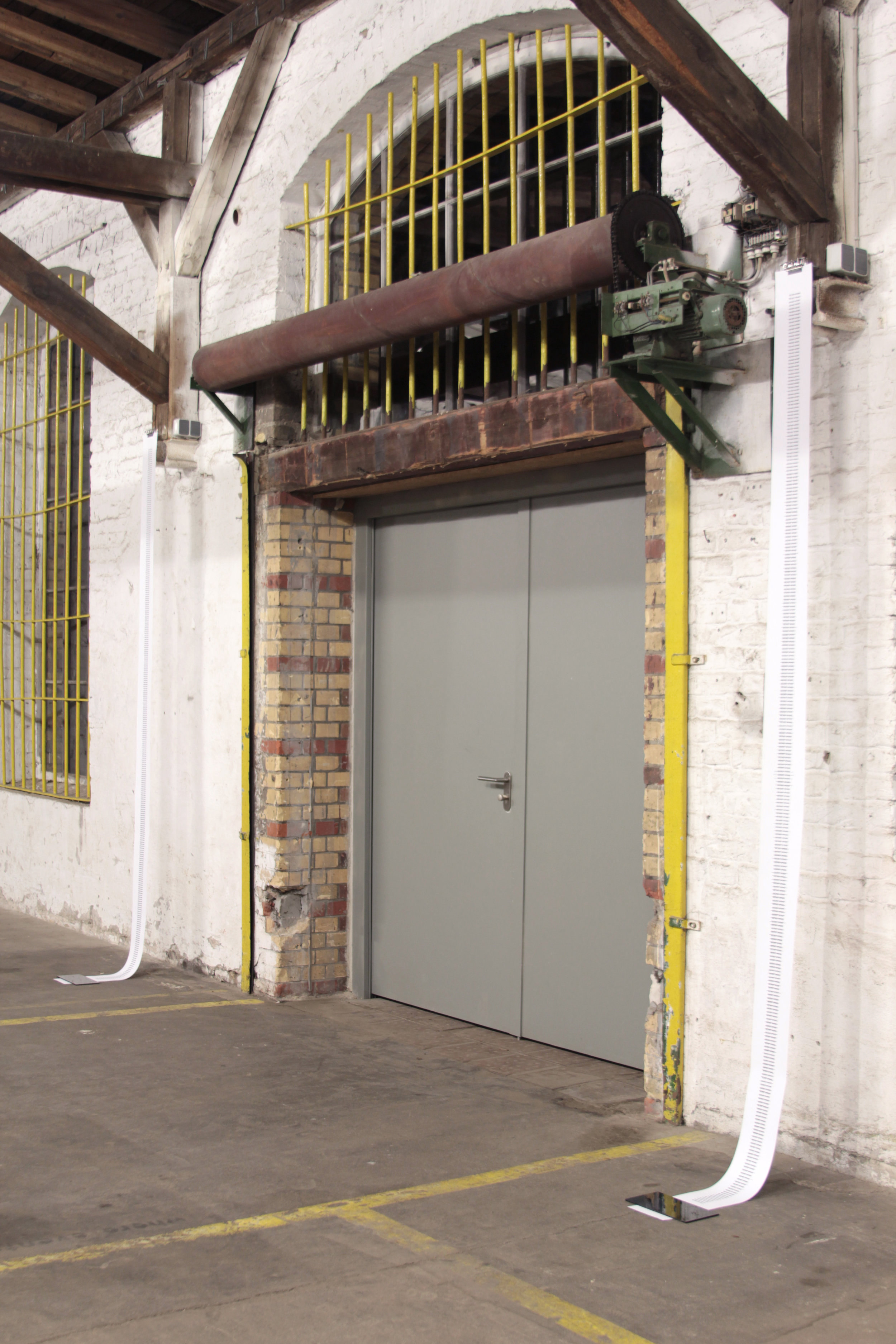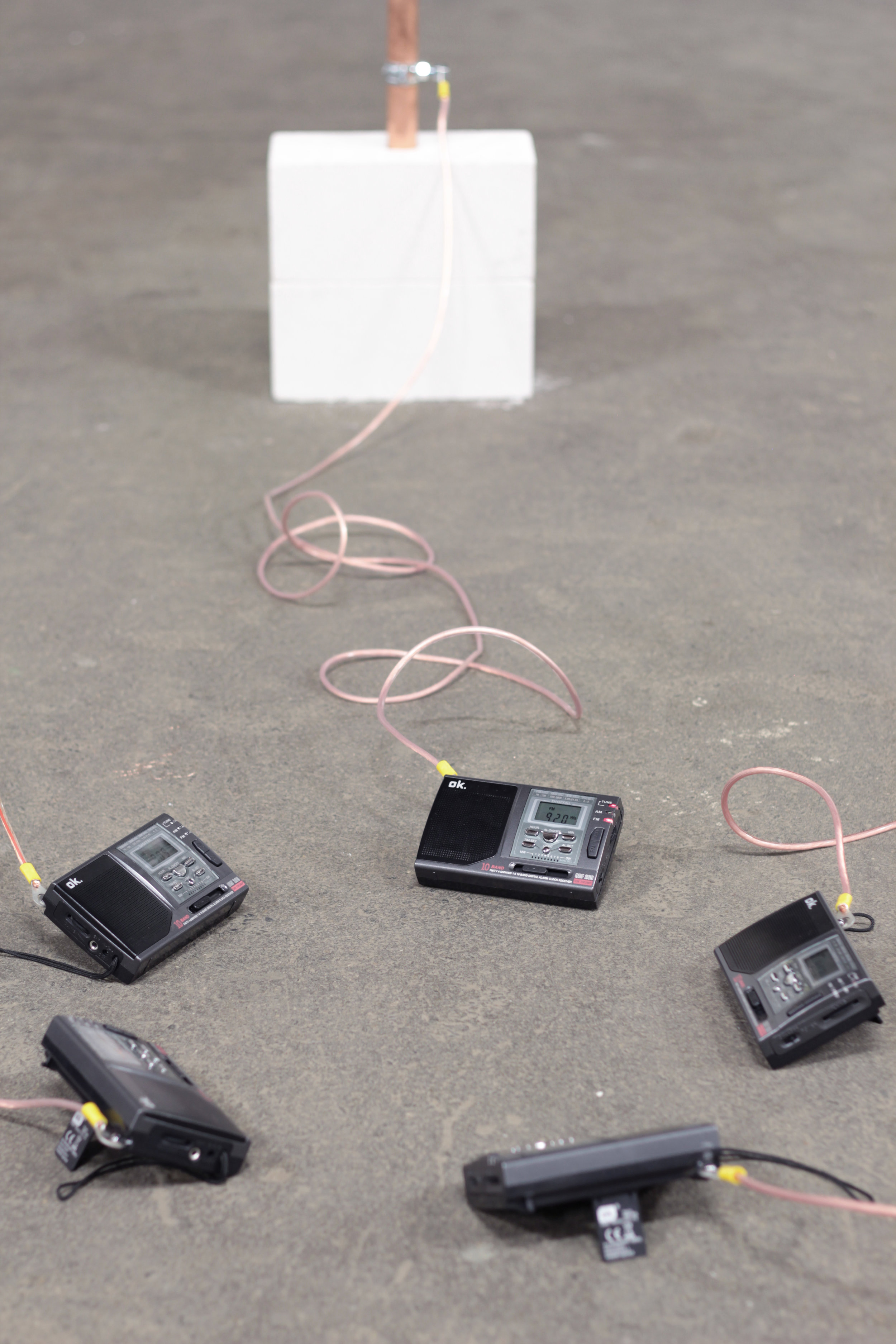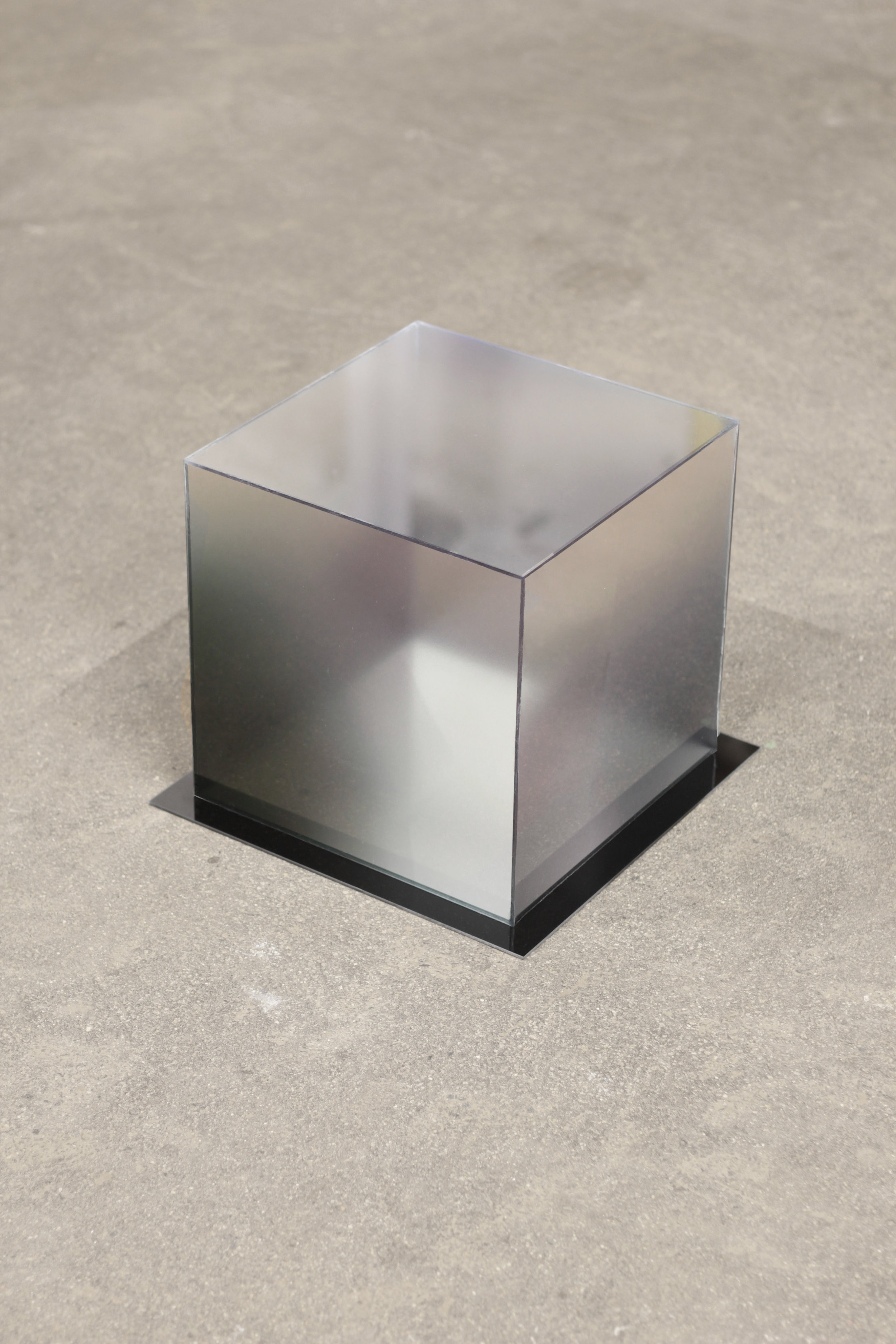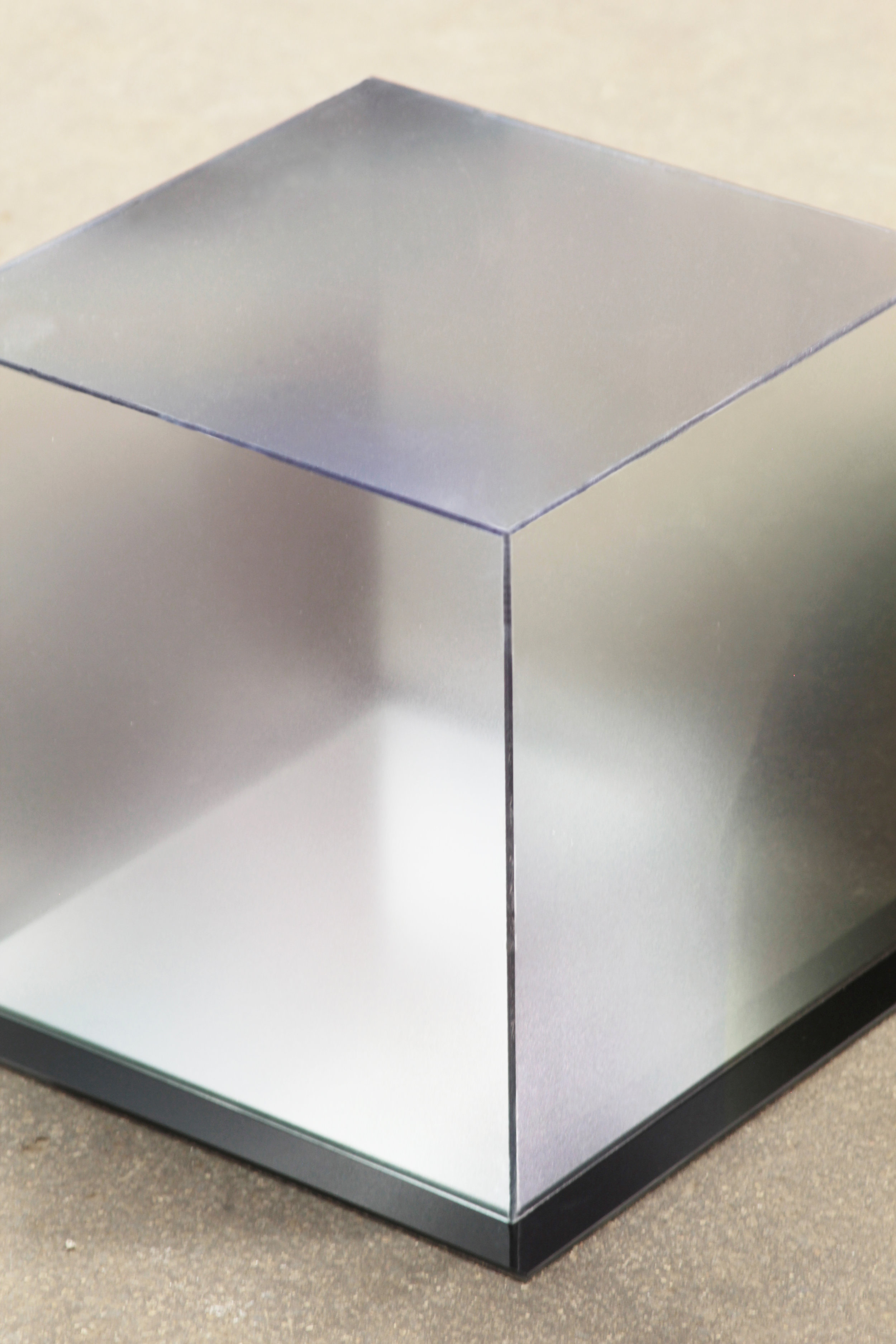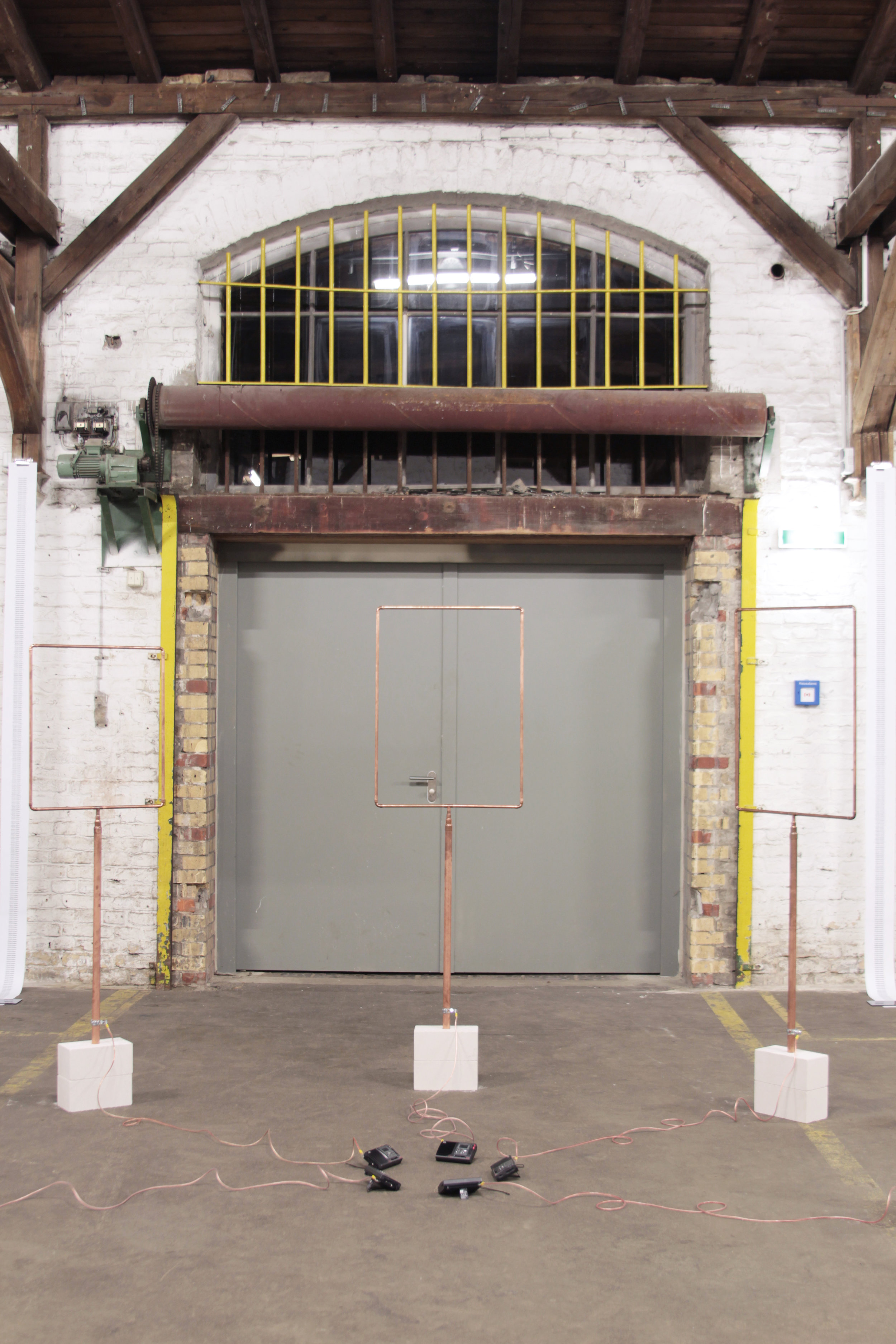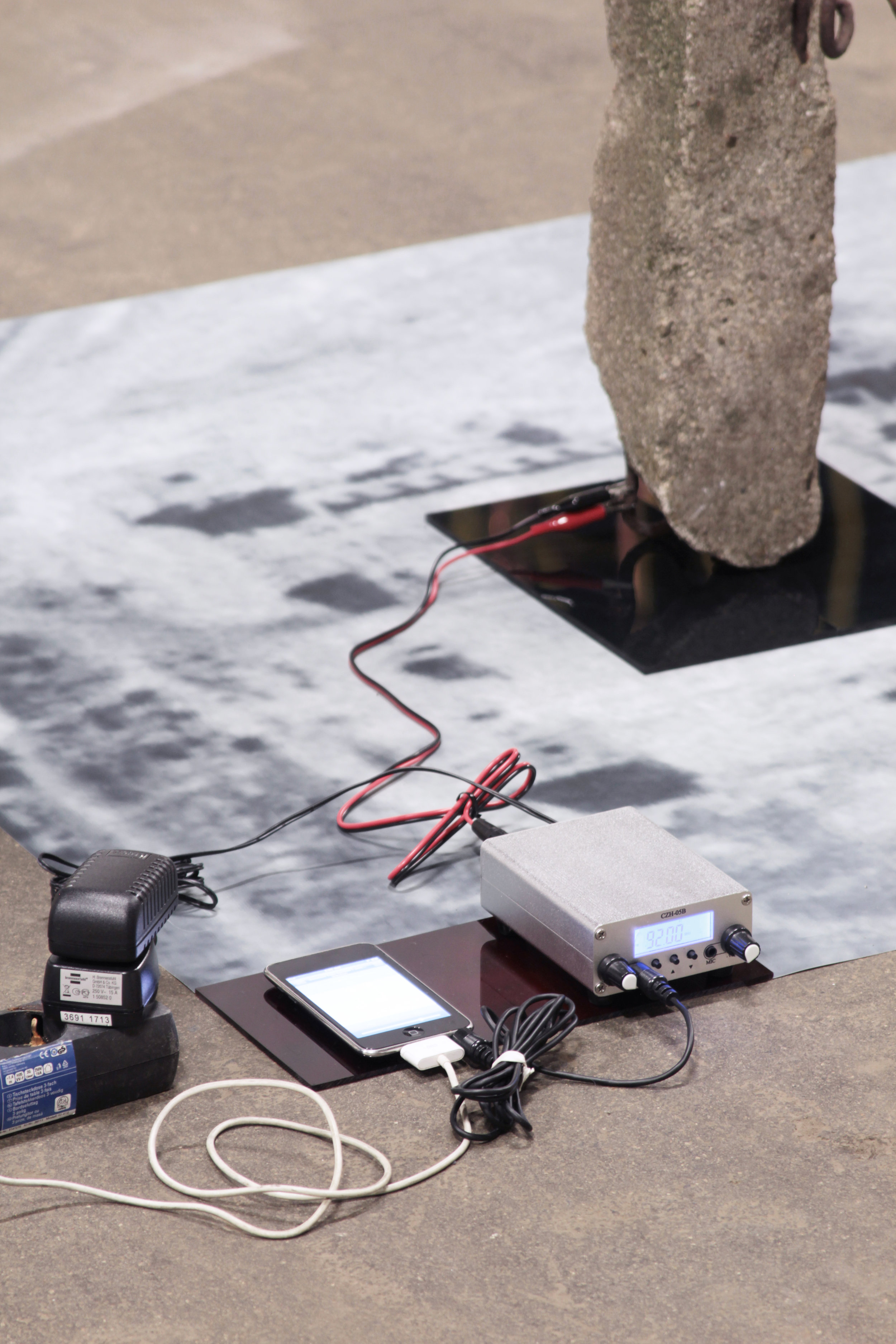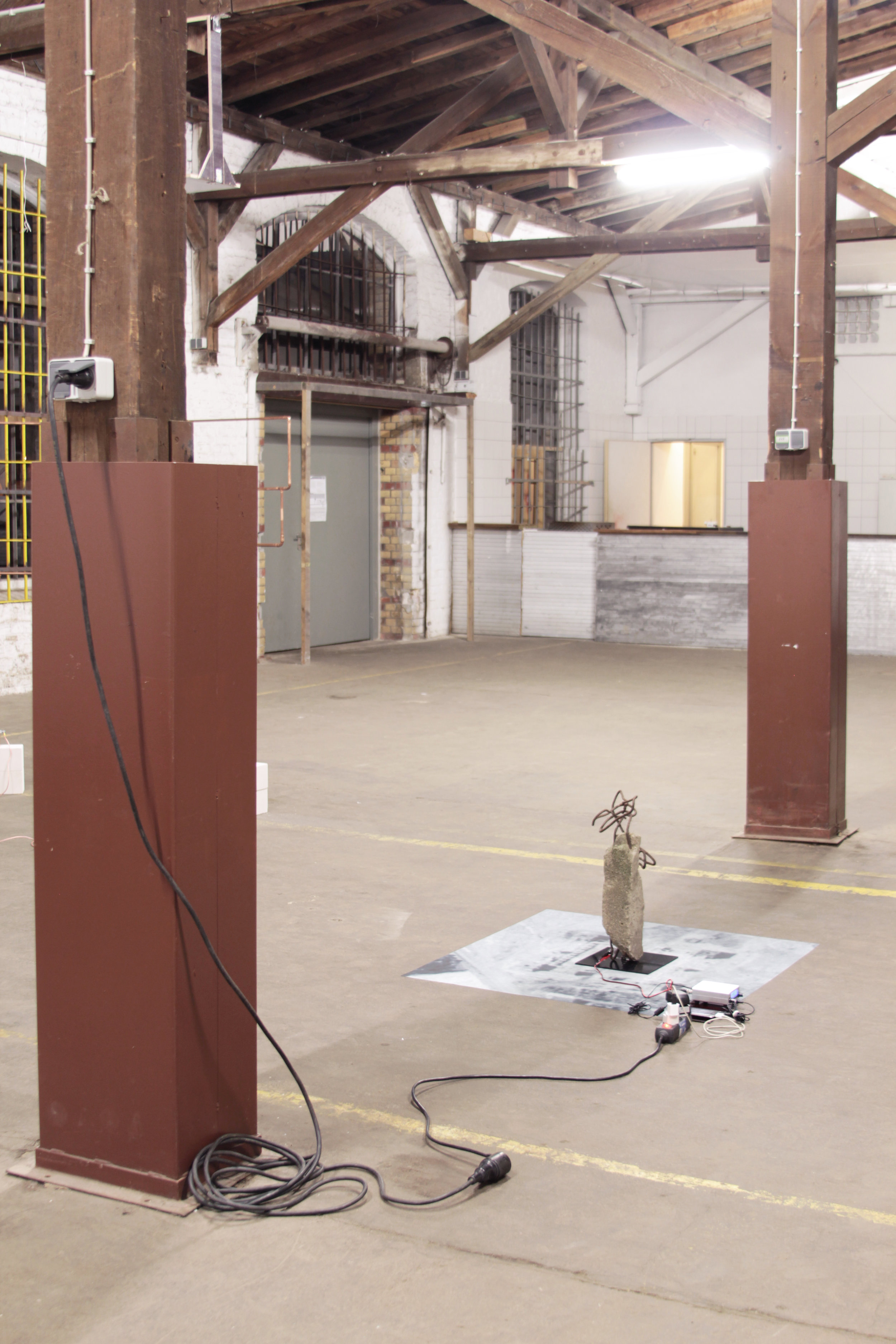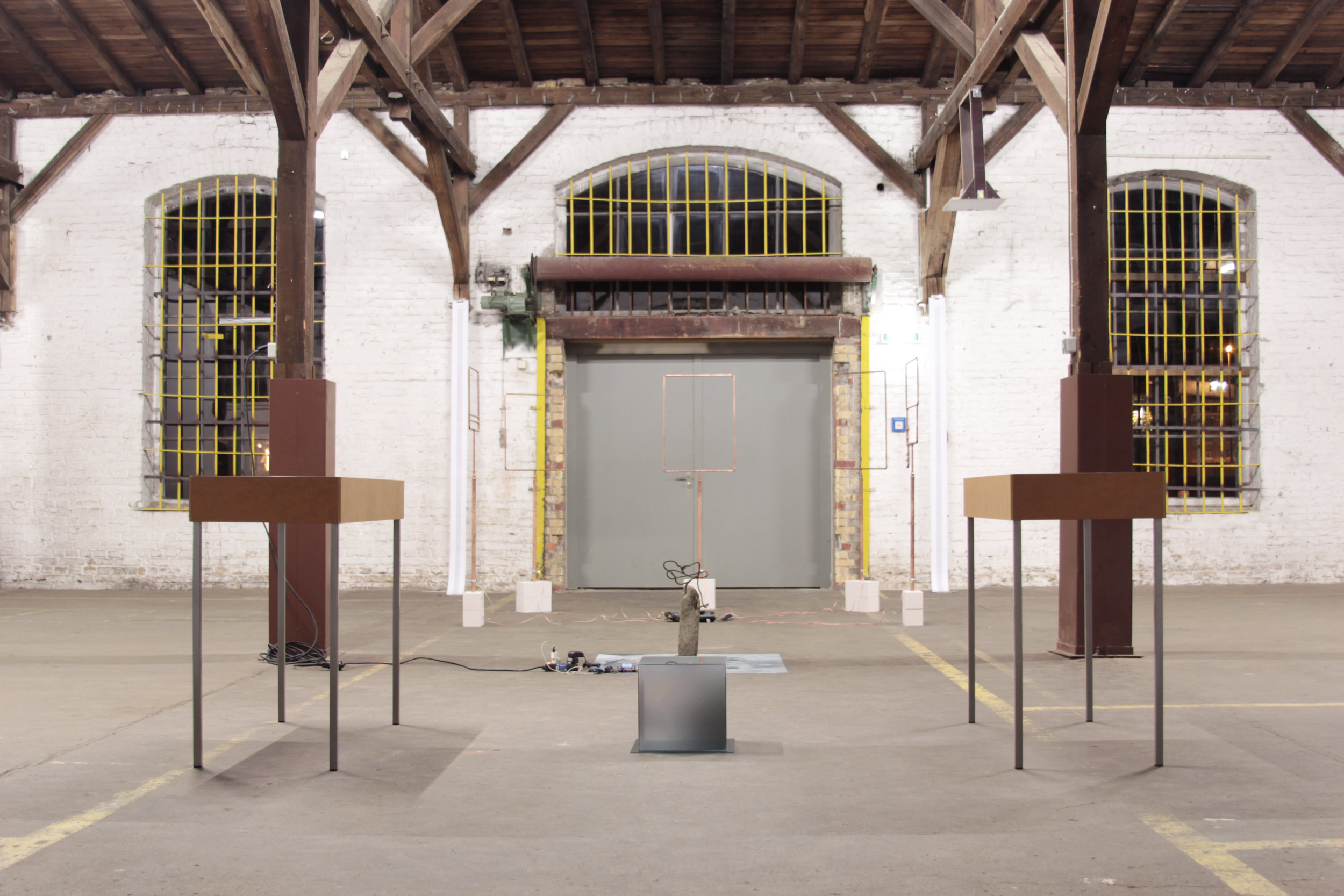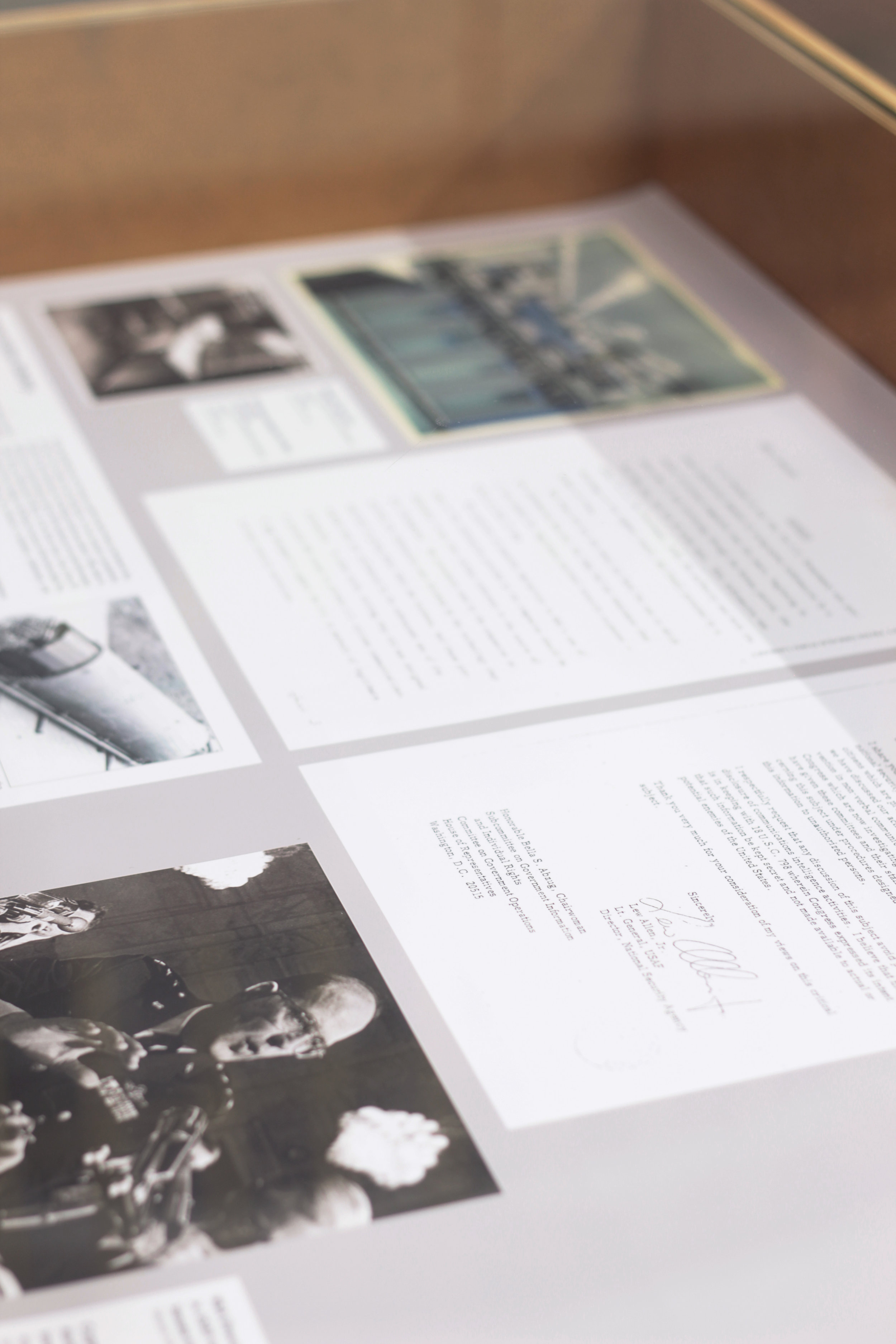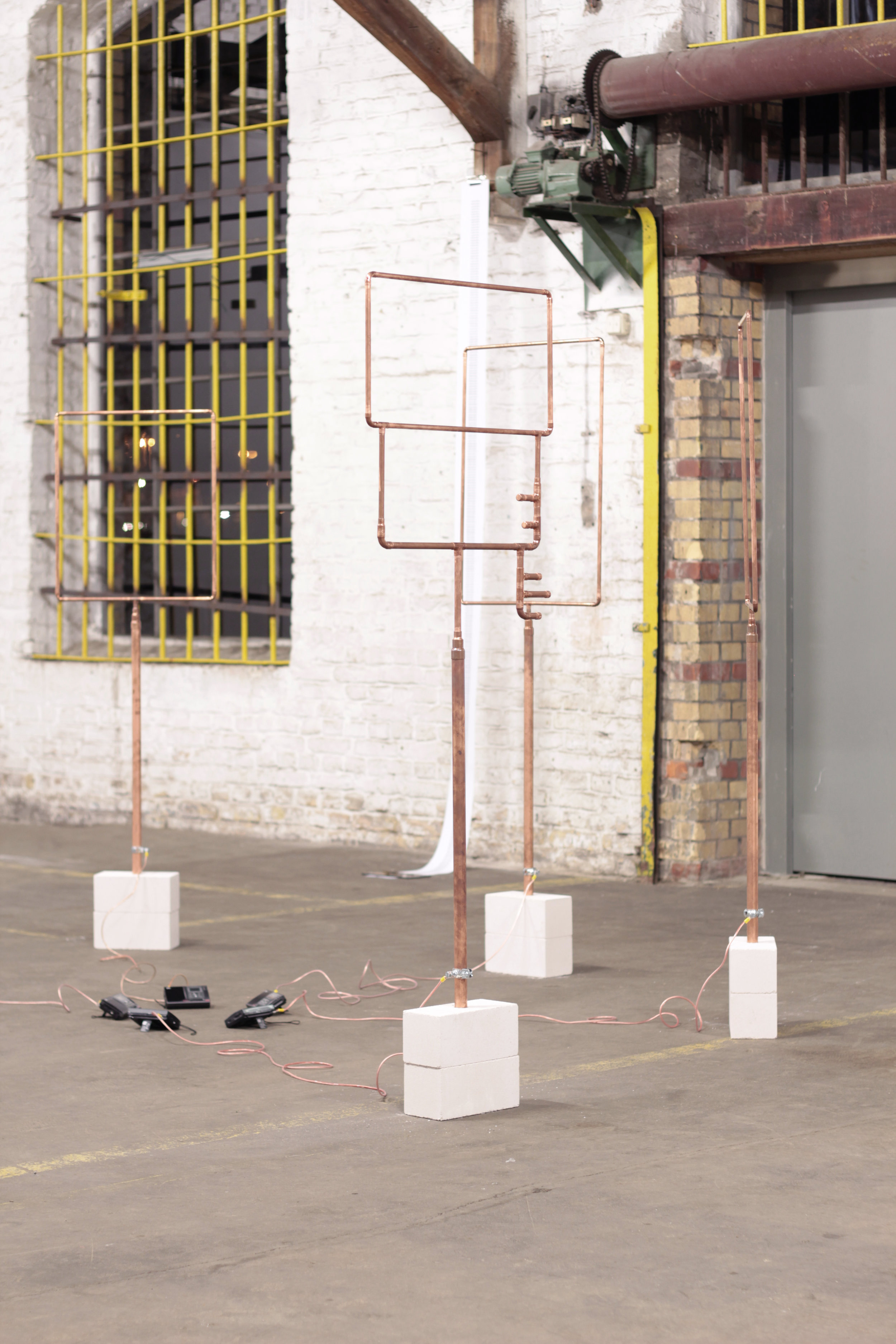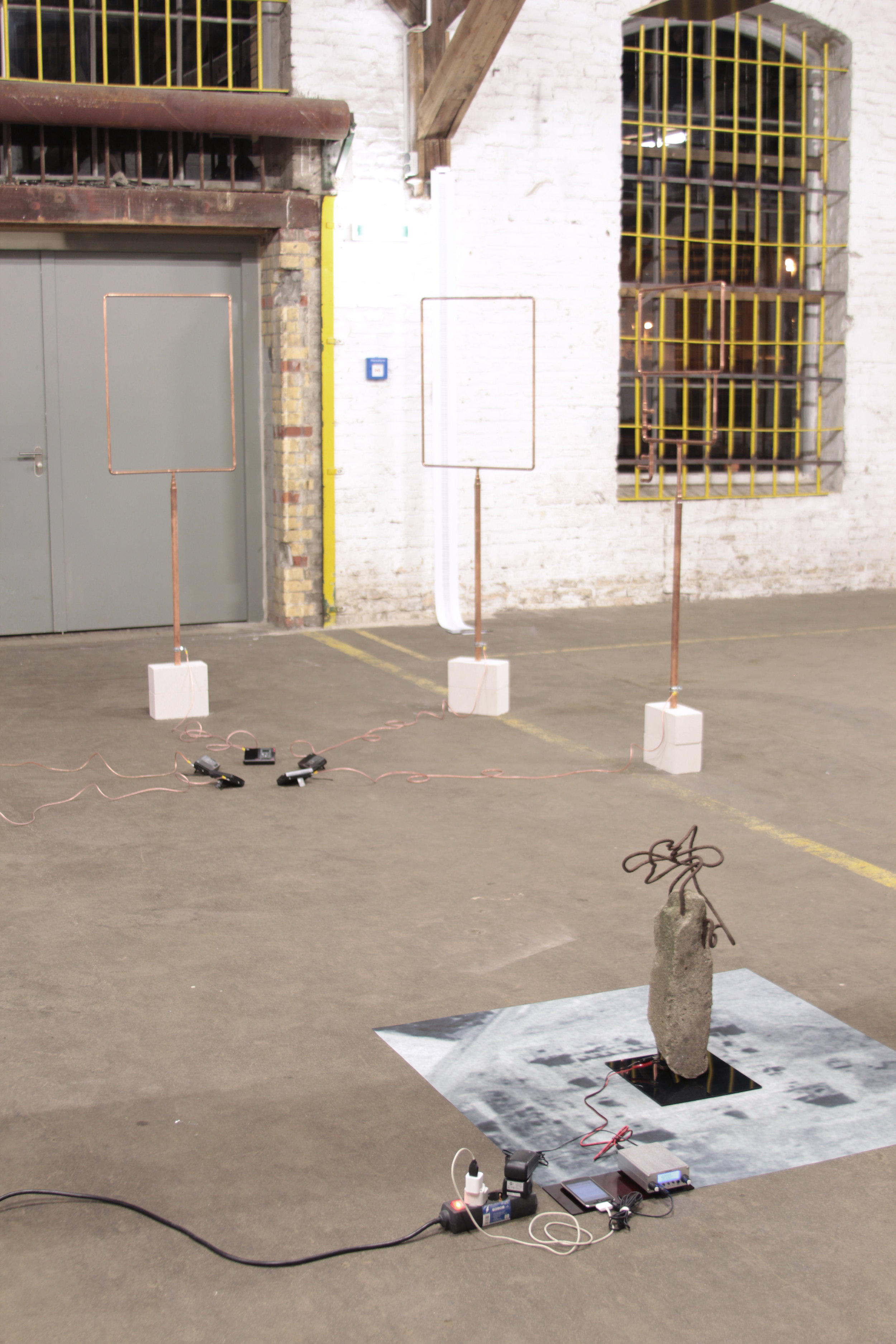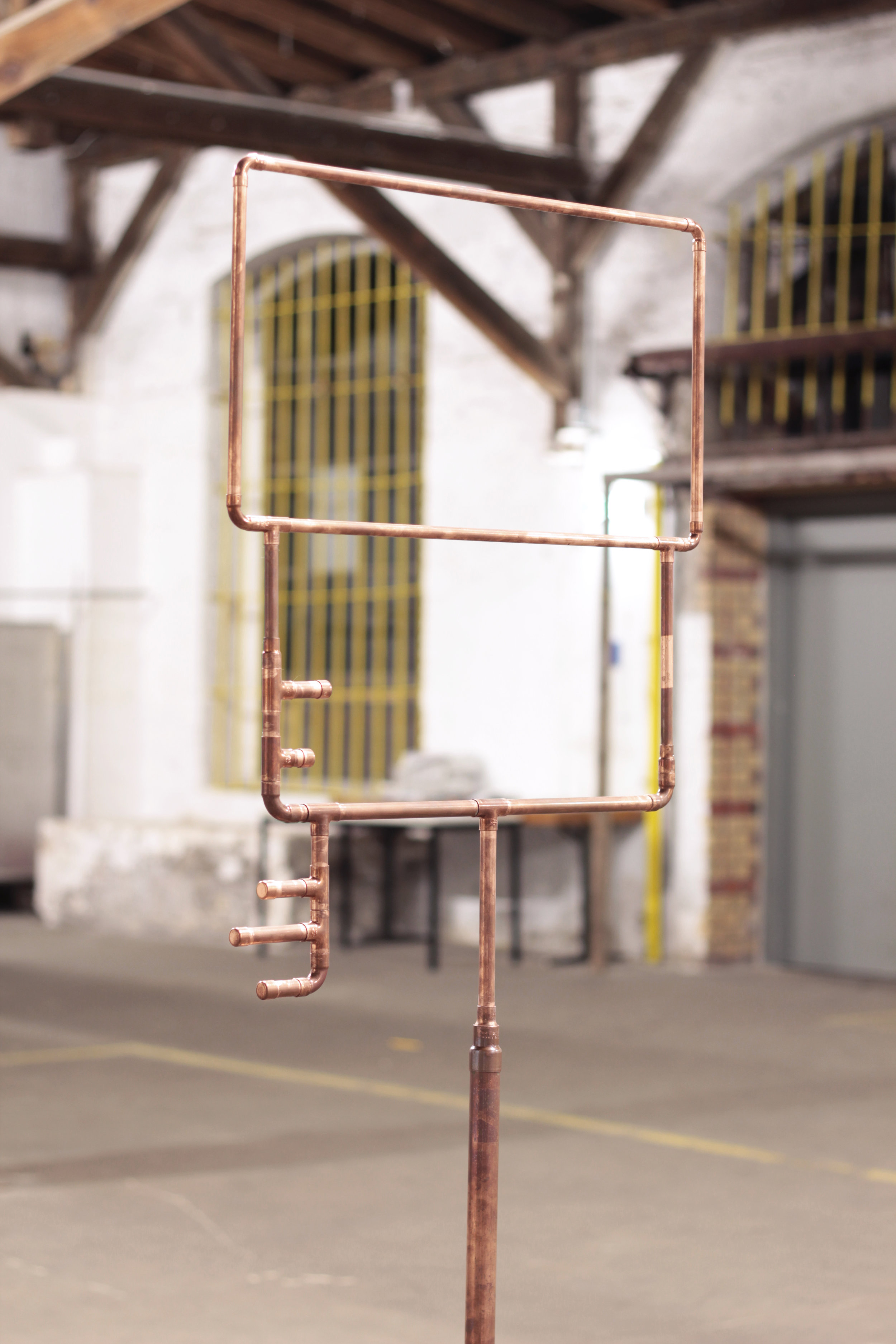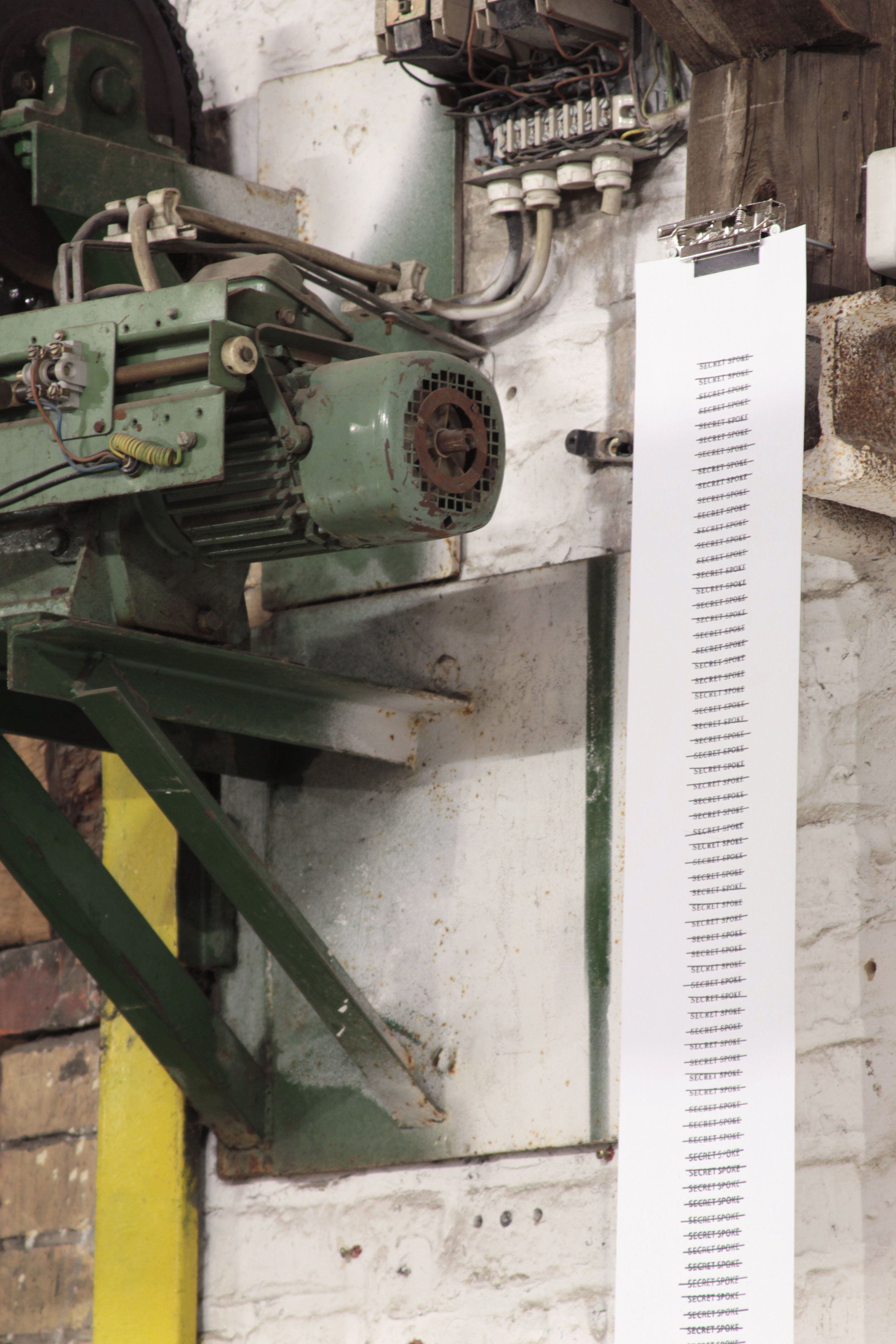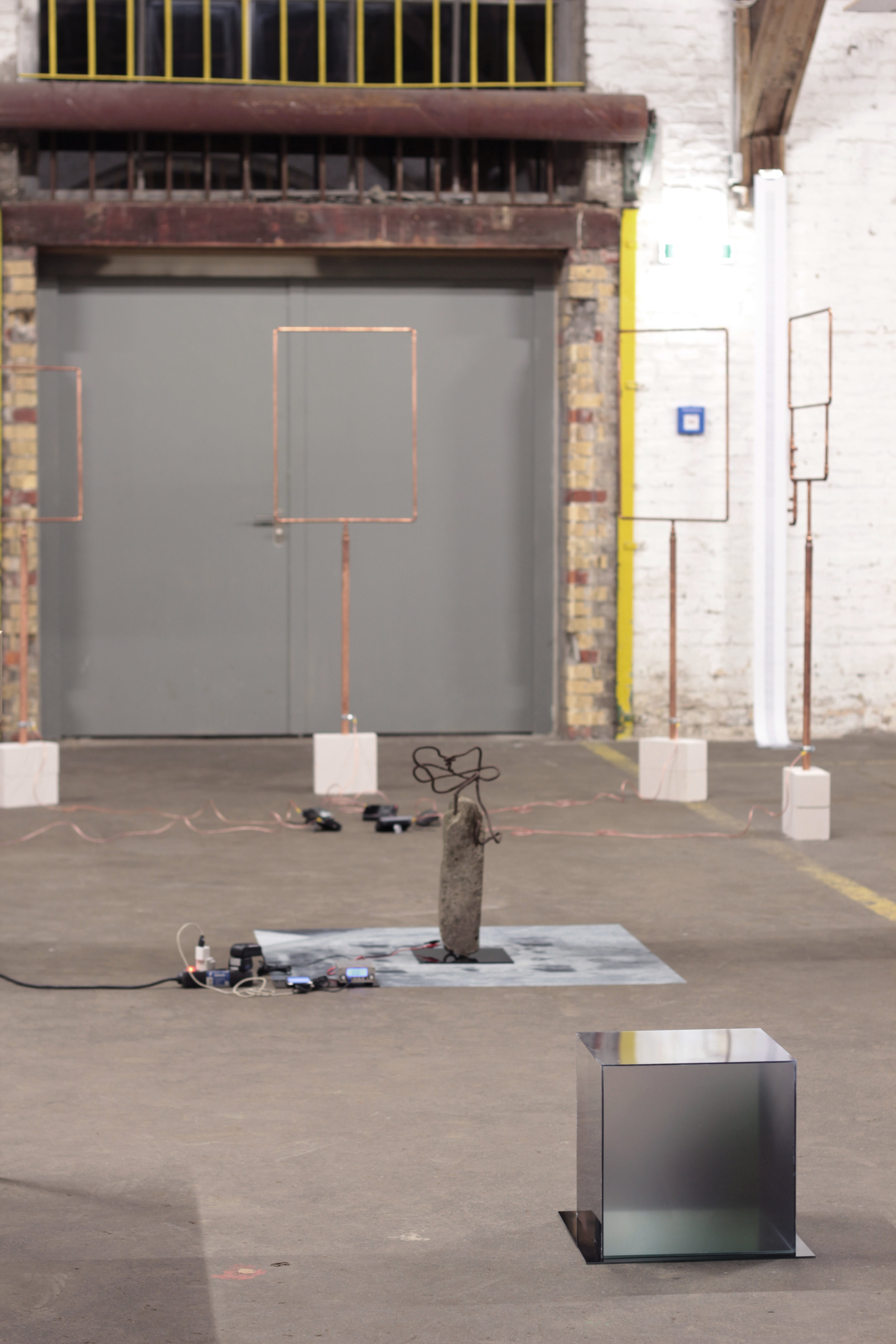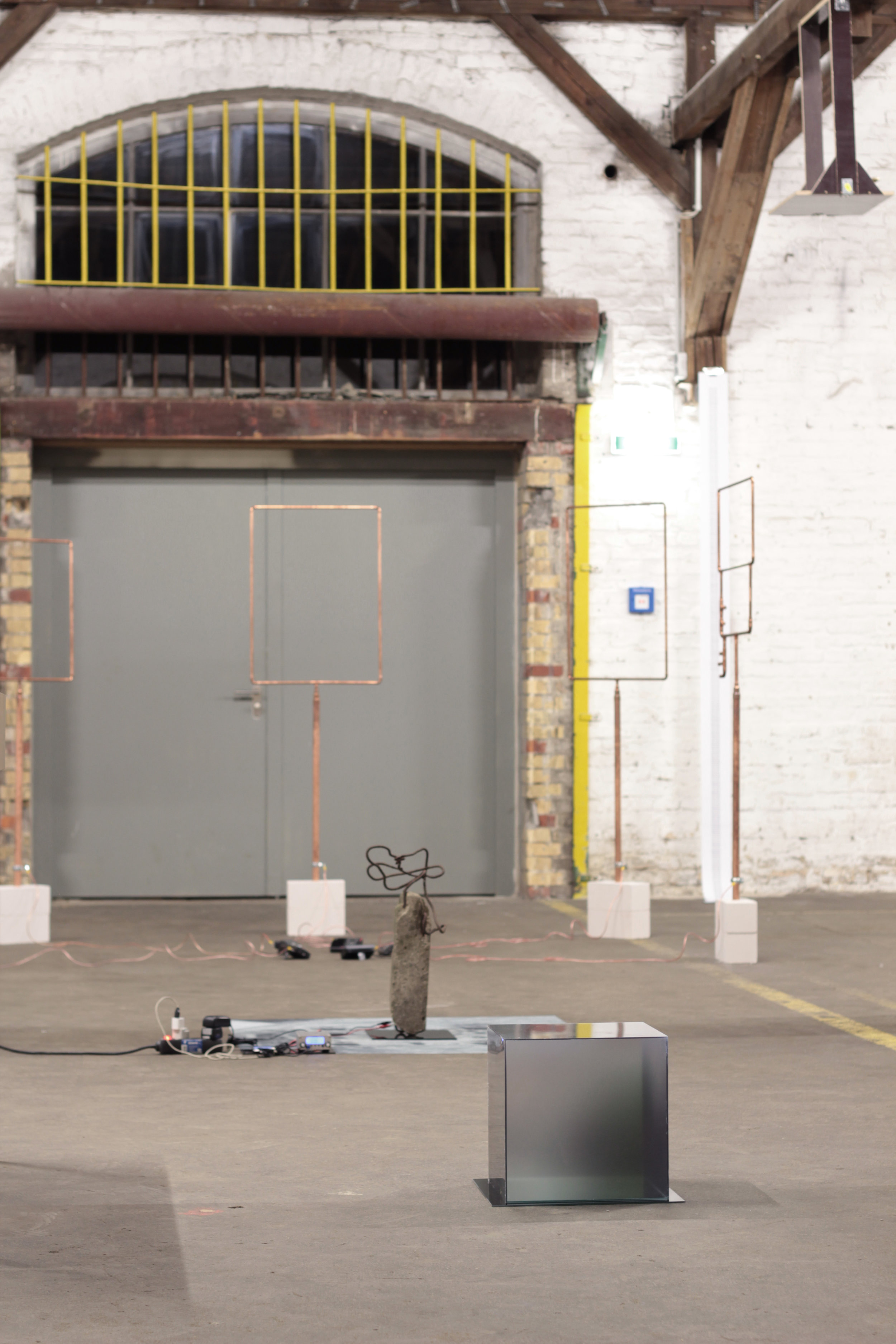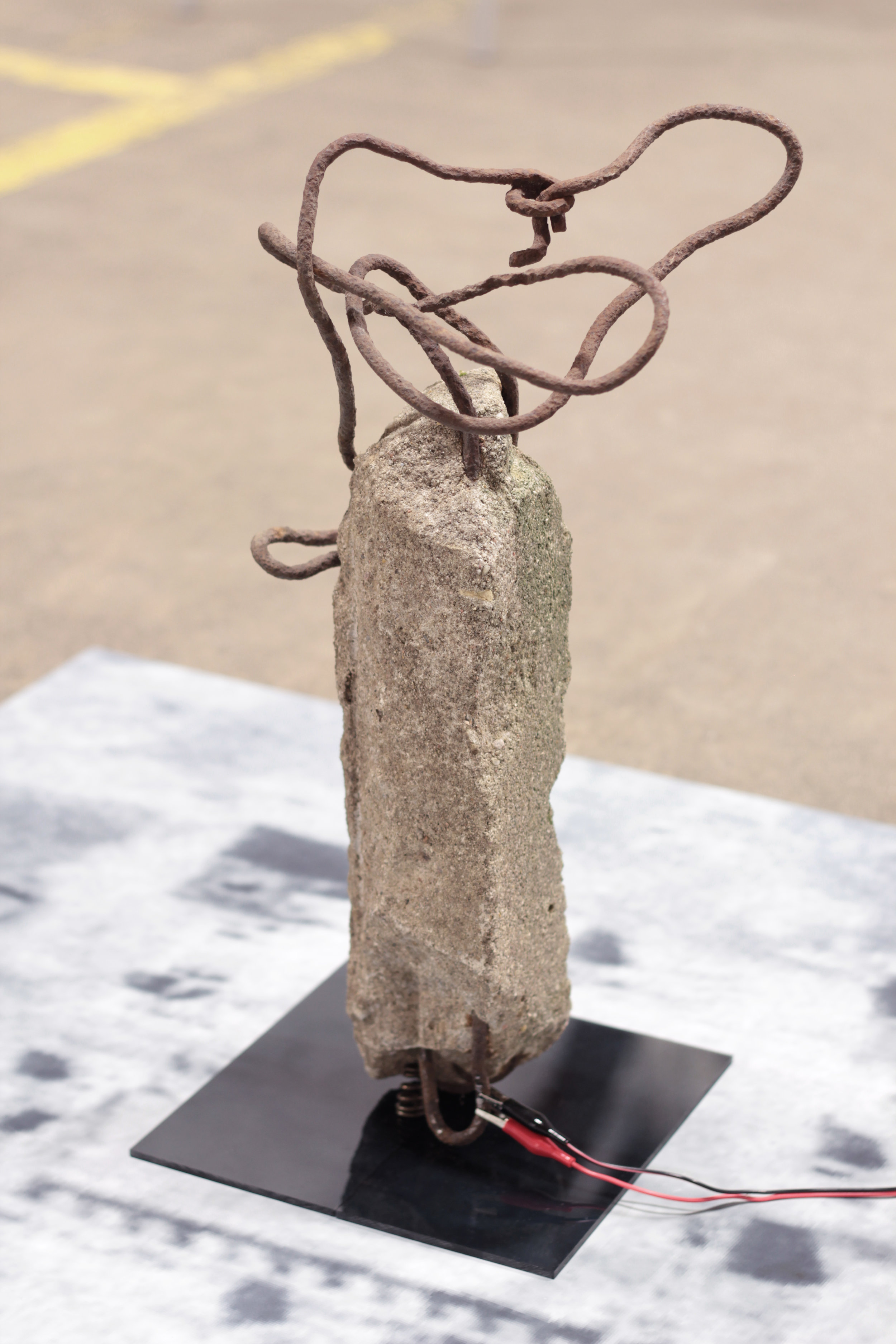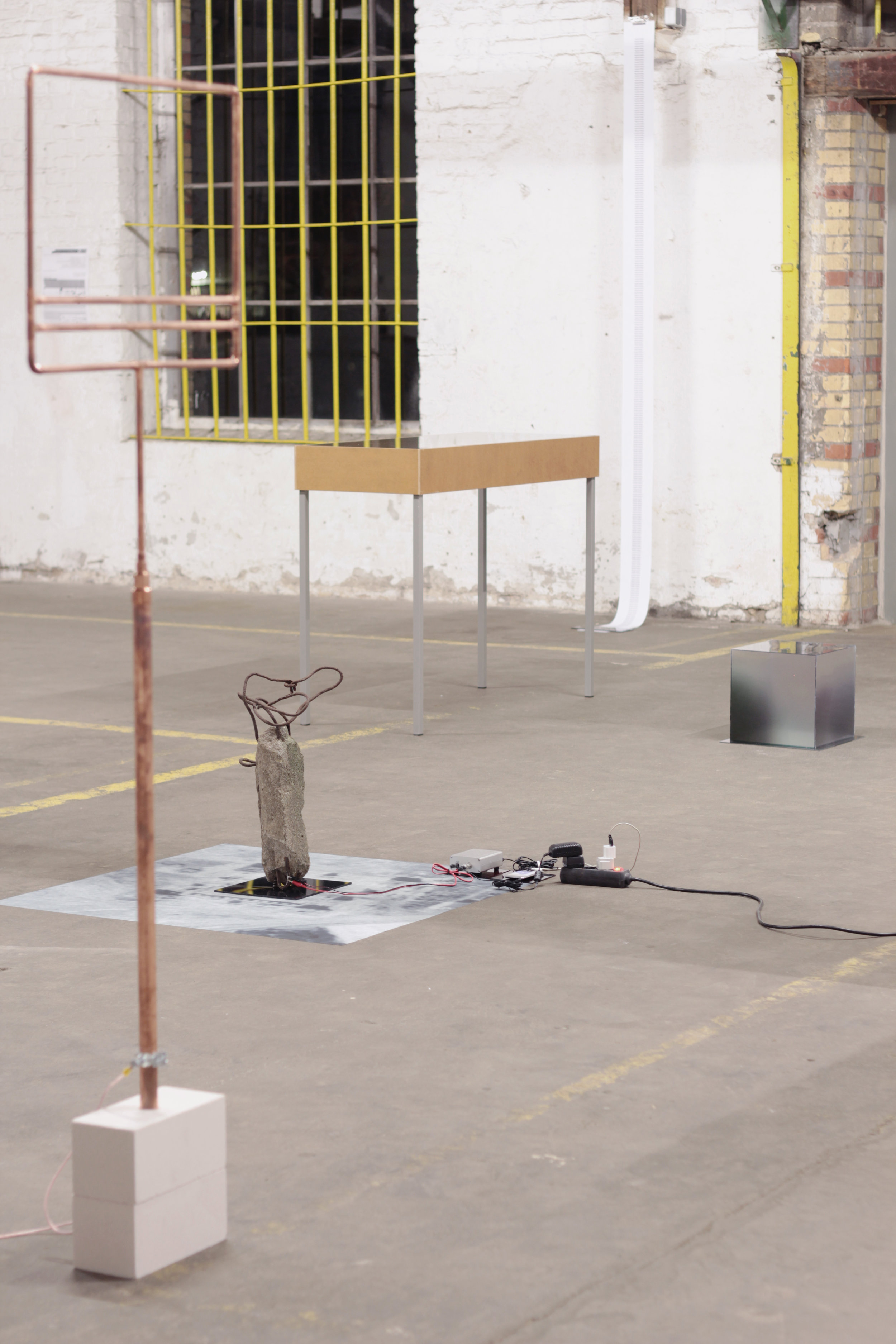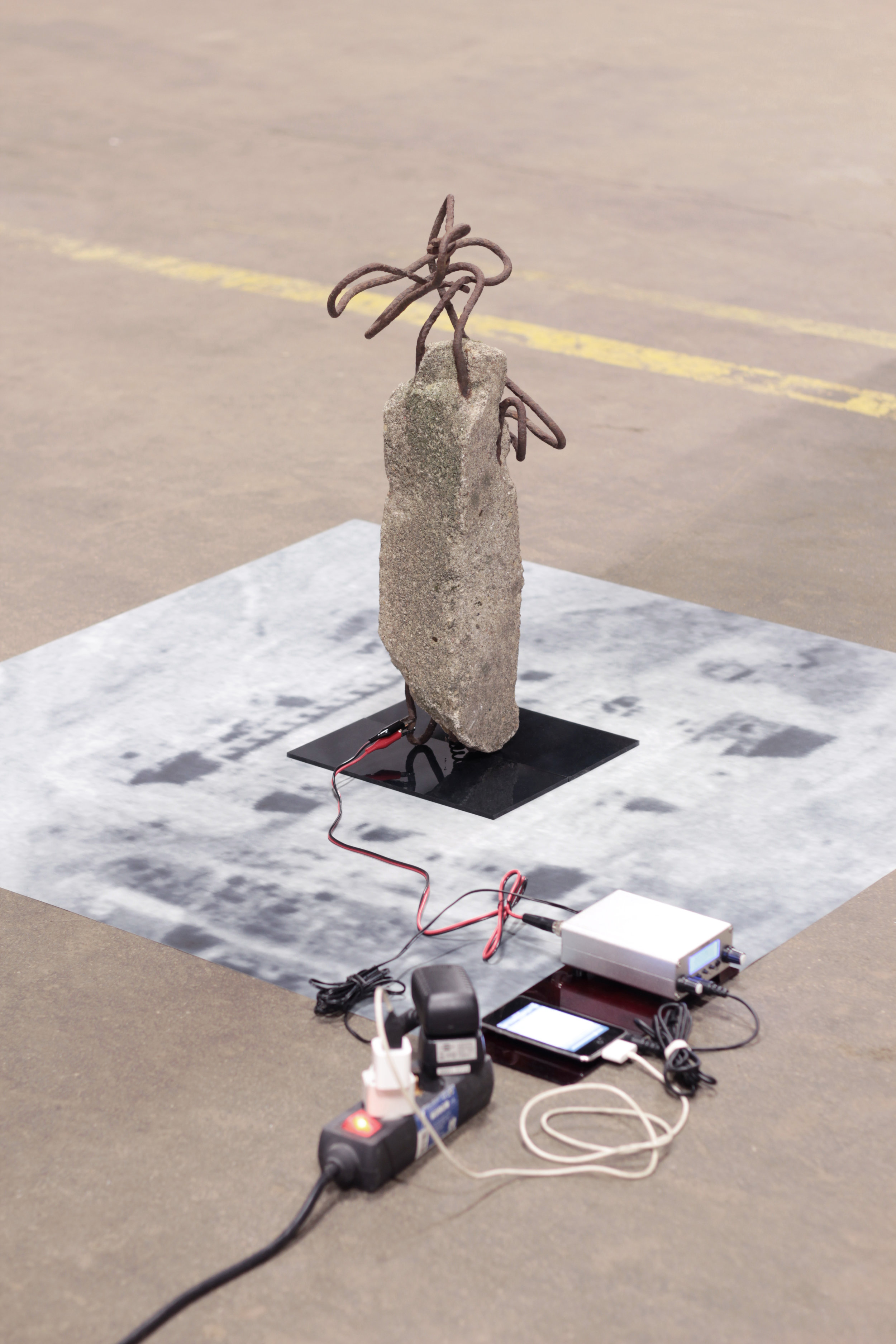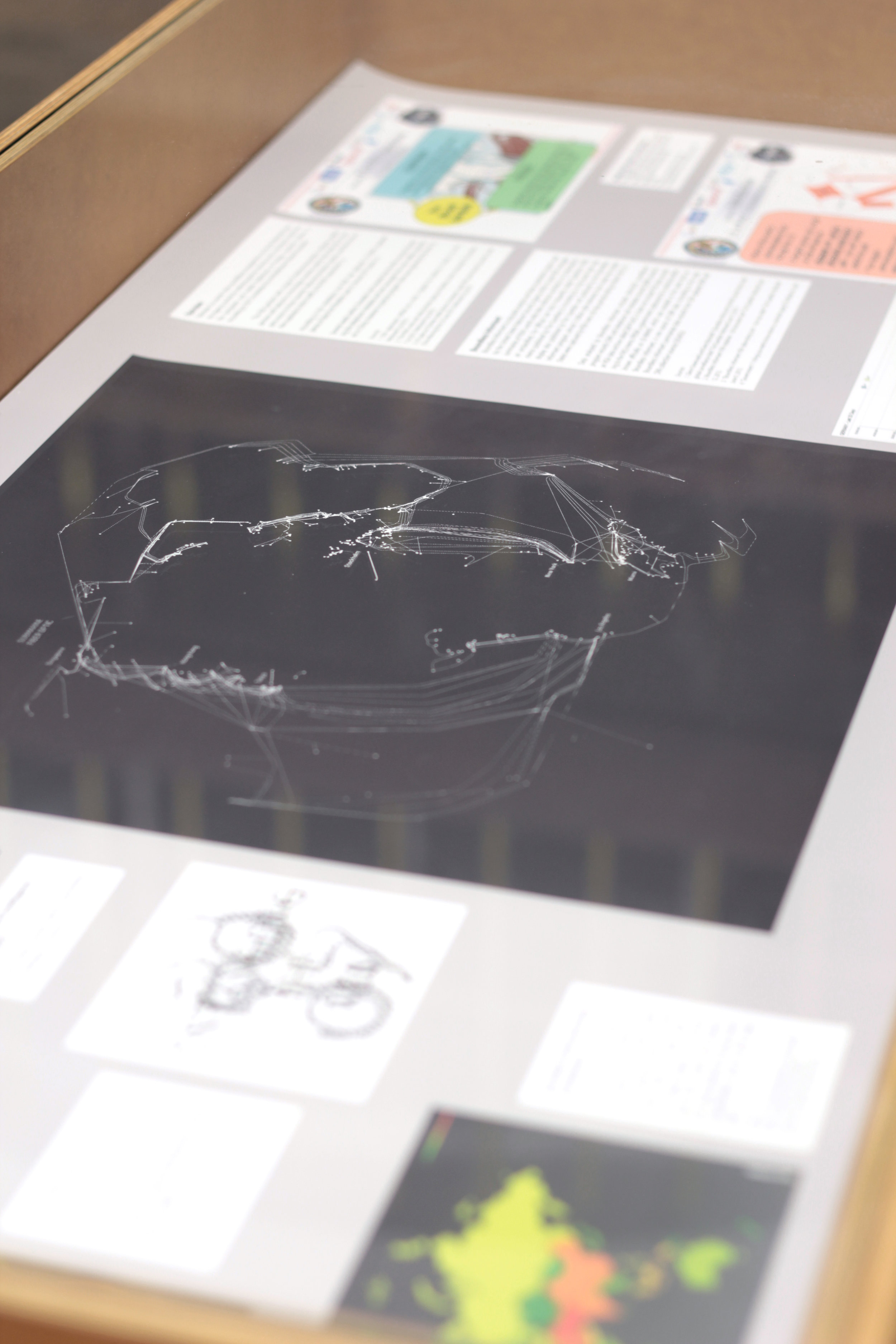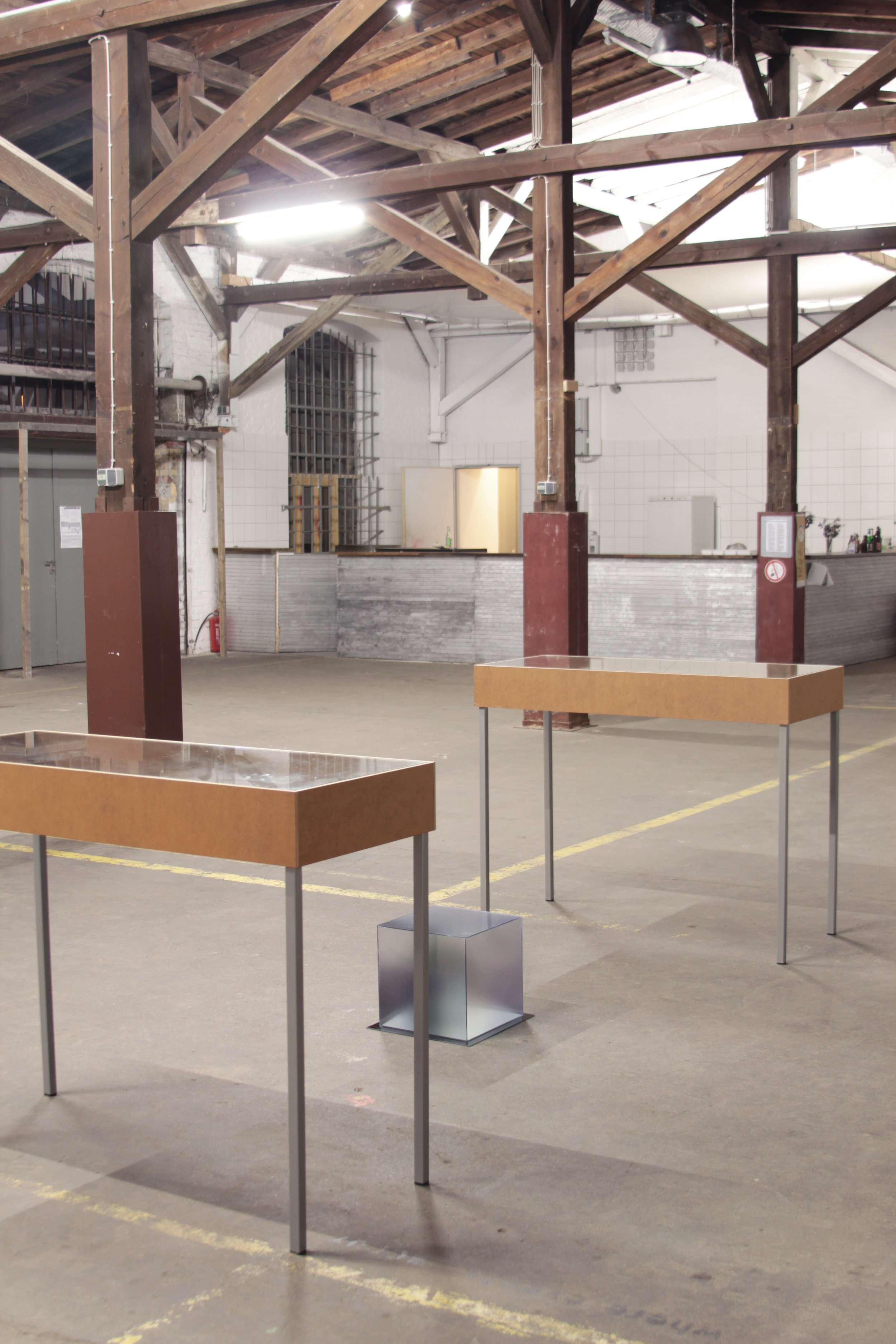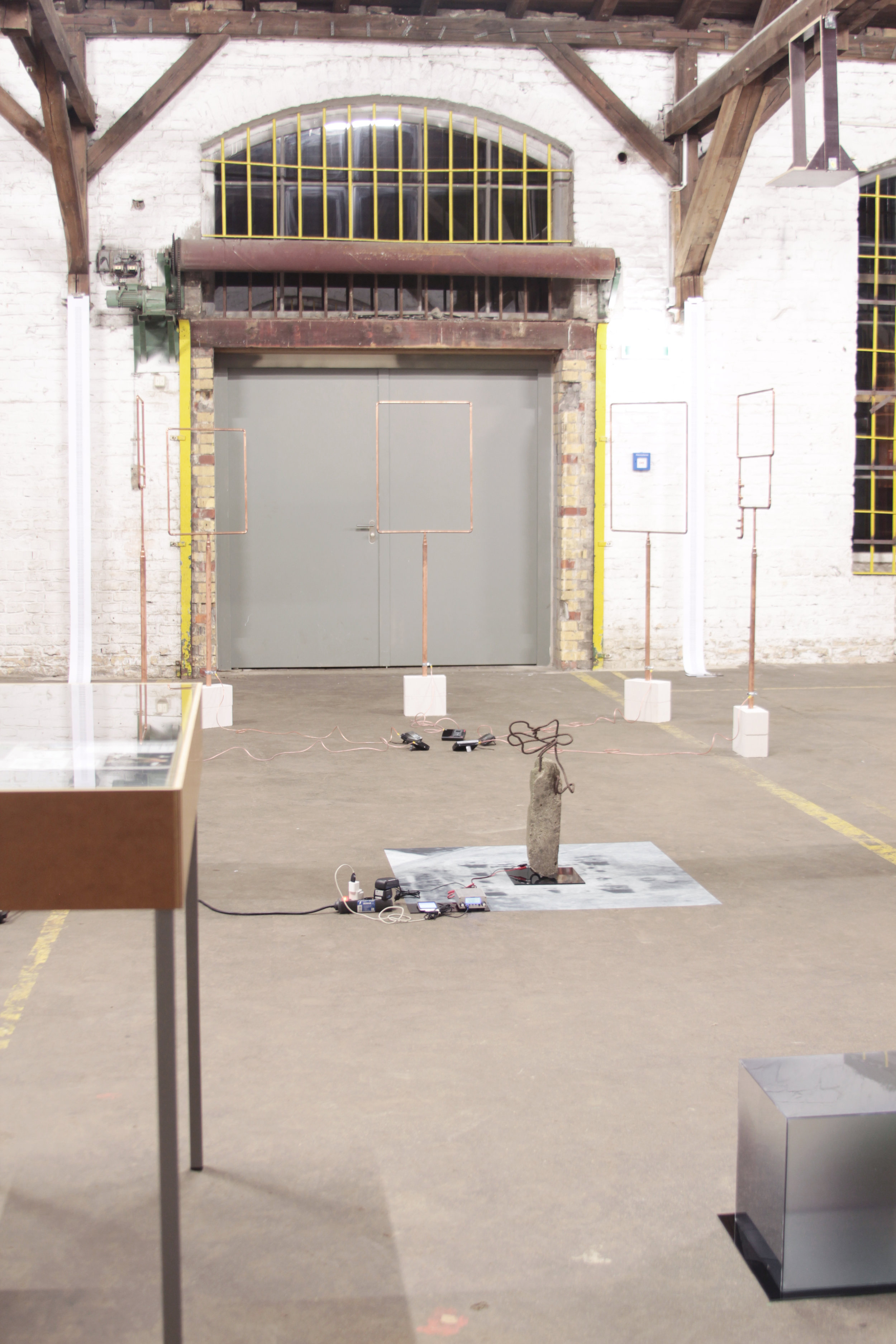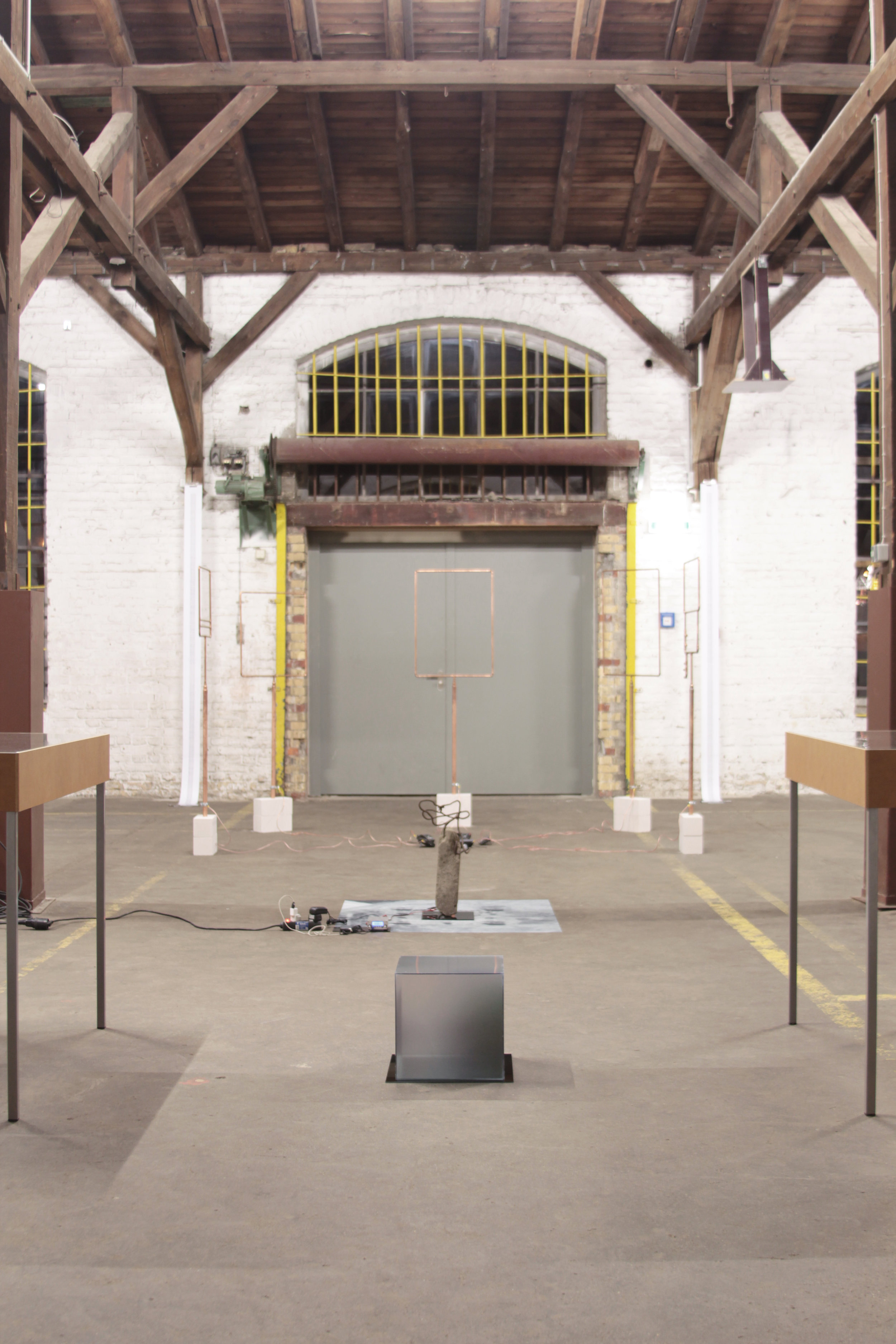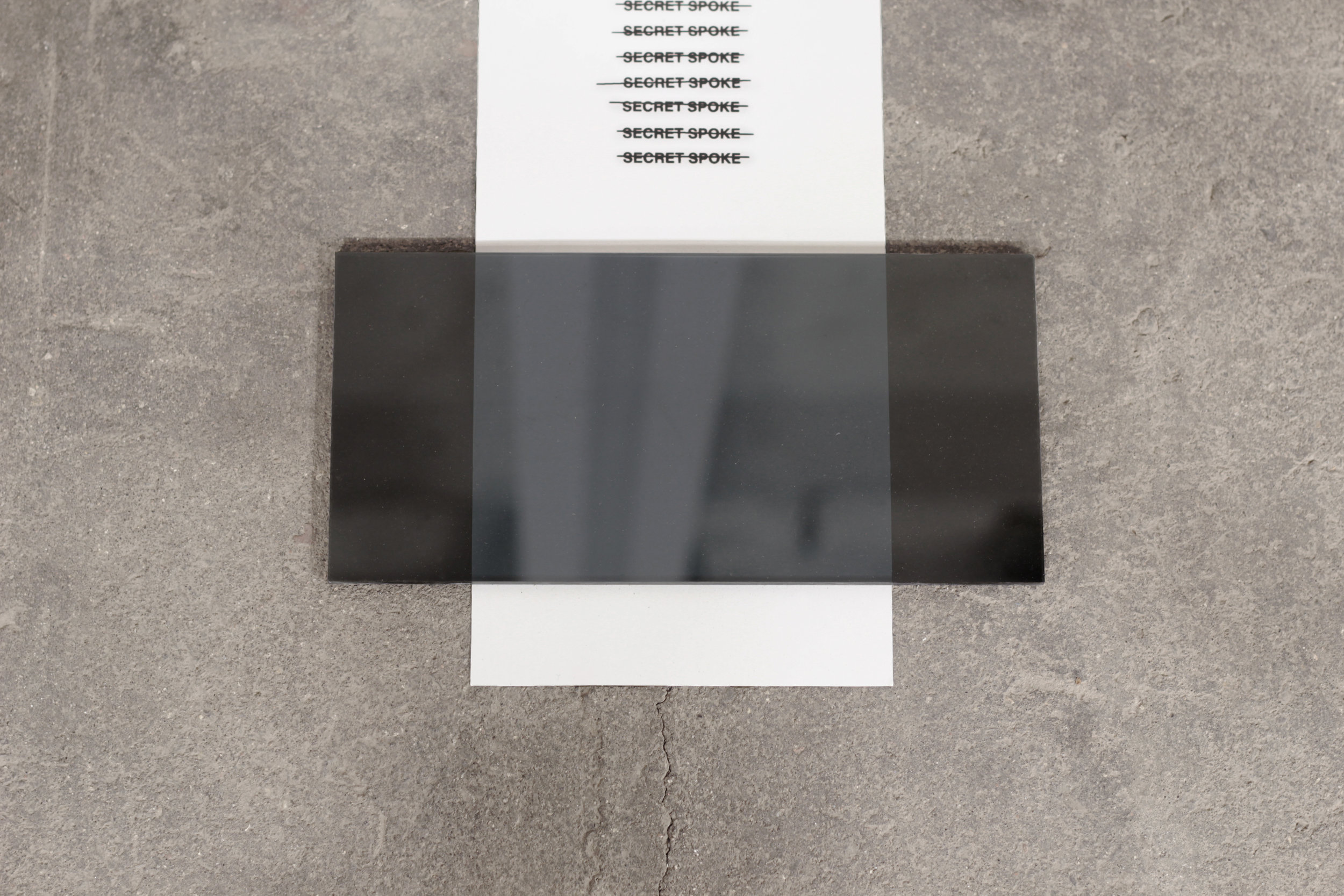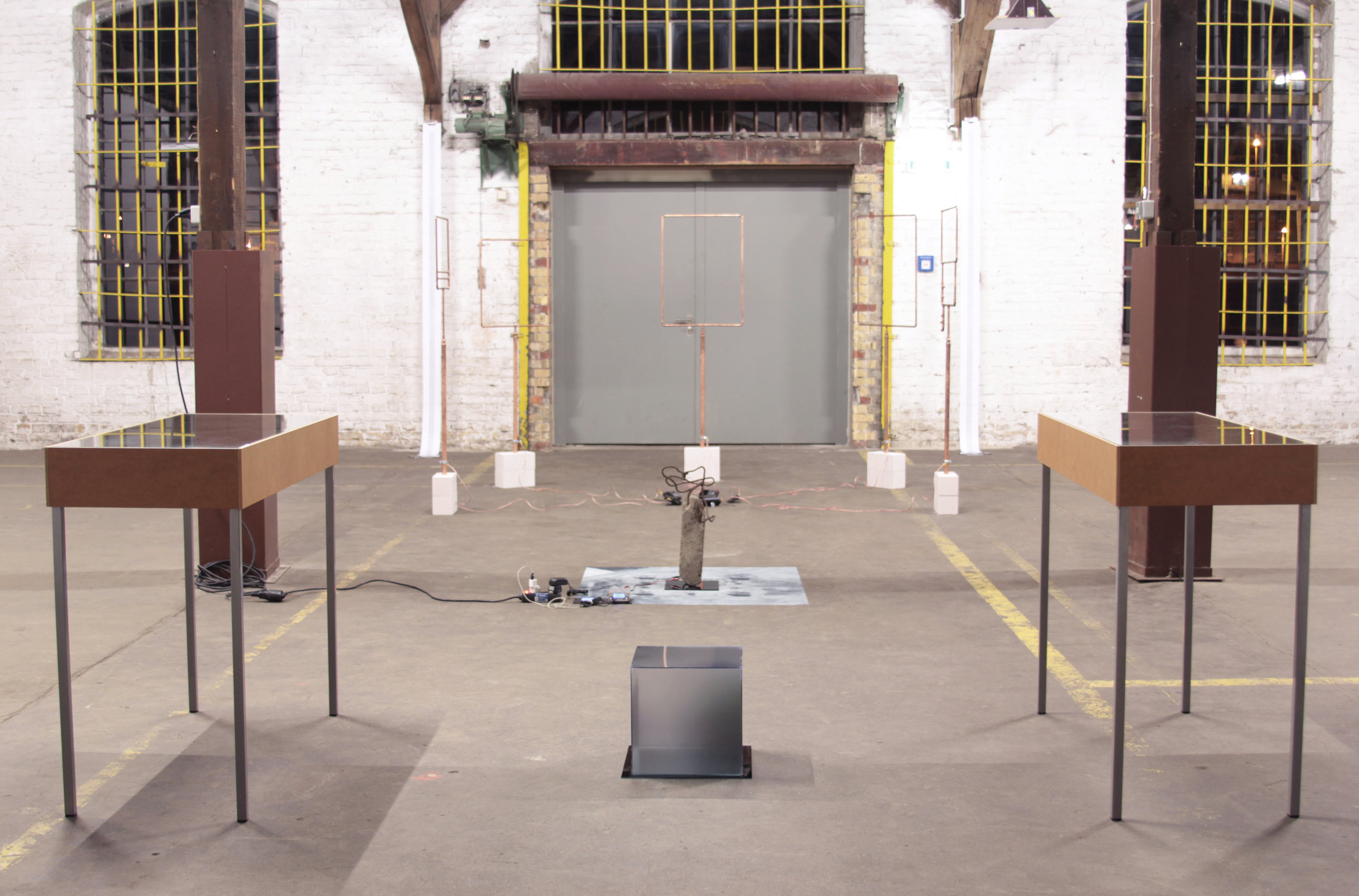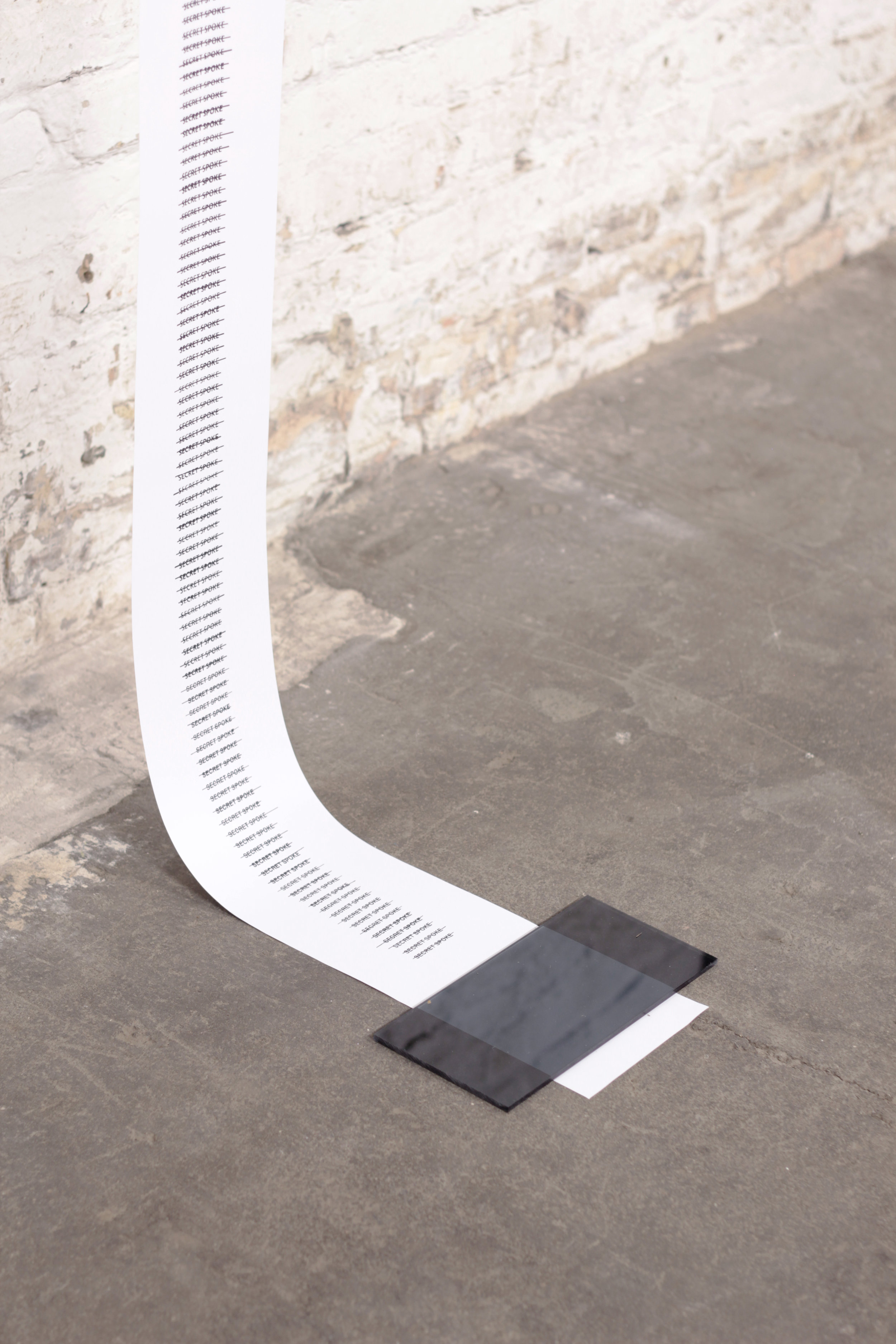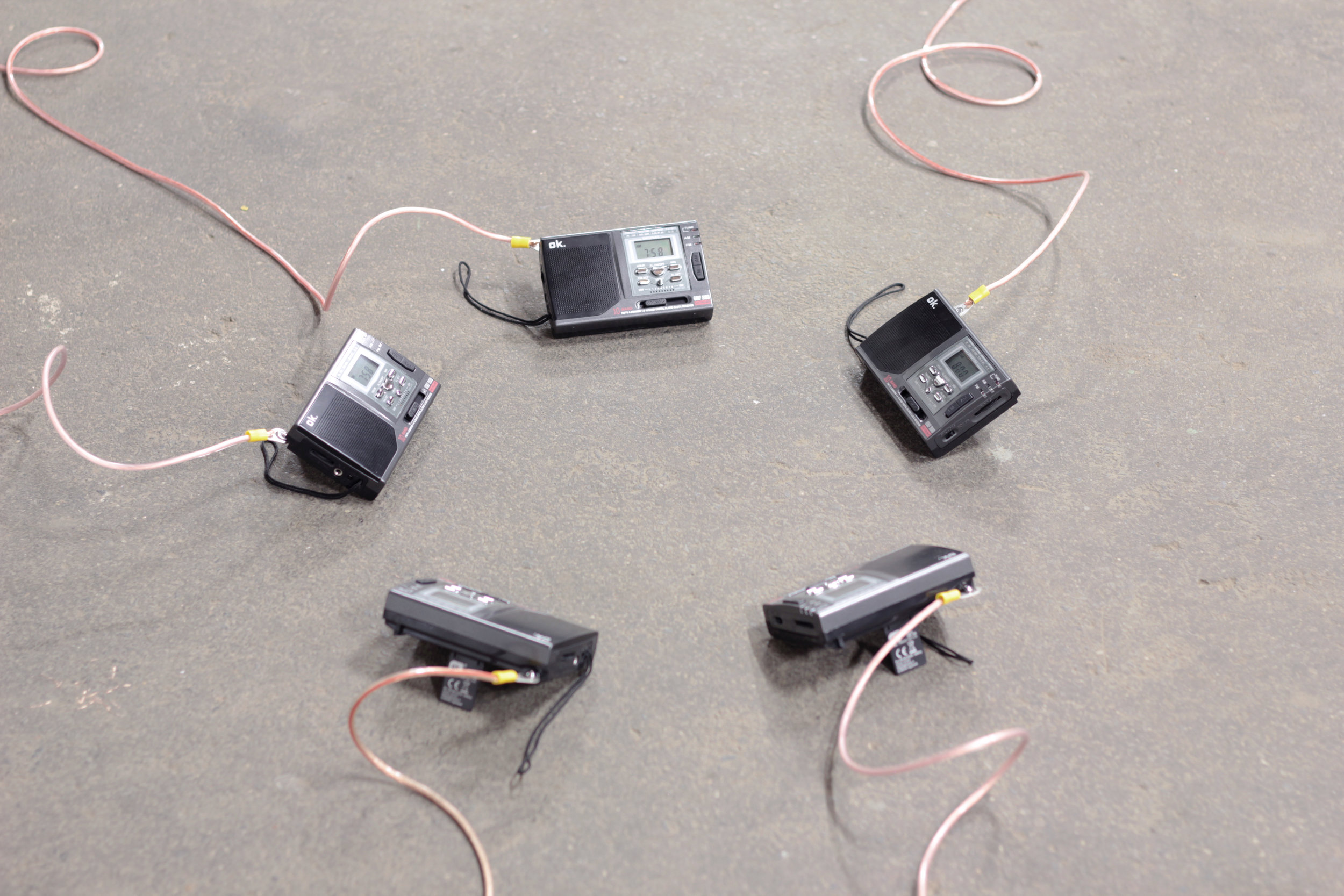Access/Disruption
ZK/U Center for Art and Urbanistics, Berlin
October 28-31, 2013
Ubiquitous Voyeurism and its Discontents
Andrea Liu
Using the physical forms, artifacts, and geographies of the metastisizing behemoth of the national security state apparatus as its raw material, Kalmenson’s “Access/Disruption” combines documentation, archive, and mimetic reconstructions of iconic sites within the cavalcade of NSA history to give us a formal, conceptual and discursive interpretation of the vast dematerialized, decentralized panopticon that is the national security state apparatus. The Teufelsberg sculpture poaches residual artifacts and symbolic metonymies of the former National Security Agency (NSA) Listening Station, such as rubble and a blown-up aerial view photograph of the former Nazi military academy upon which Teufelsberg was built, coalescing into a mythic and enigmatic Stonehenge-like paean to a site with a checkered history of geostrategic contestation and East/West bloc political subtexts borne out of the Second World War aftermath. Representationally indeterminate, un-flashy, and resisting easy legibility, the washed-out black and white image of the former military academy (Wehrtechnische Fakultat) that was unsuccessfully bombed and then buried with rubble by the Allies after World War II curiously conjures up 1970’s documentation of Robert Smithson-like land art “site/non-site” interventions.
The “Receivers” sculpture is based upon redacted documents of the NSA transformed into five copper antennae sculpture of human height that replicate the visual patterns of the blacked out lines, blank spots, and occasional text space of redacted documents. Again, an aura of enigma imbues these sculptures, as if one would not be surprised to find them after travelling 1000 miles in an unpopulated desert, replete with some archaic ritualistic tribal history indecipherable to the passing bystander. These sculptures seem to be embedded with a mute history, keen with an internal certitude of their purpose, the knowledge of which we are not wholly privy to. “Data Plate Upstream” and “Data Plate Shamrock” are two vitrines that comprise “information collages” of archival footage relating to such issues as the history of cable interception, Project Shamrock, the mechanisms of electronic surveillance records, PRISM, maps of submarine fiber-optic cables, and data analysis and data visualization systems such as Boundless Informant. As with the photo of the Nazi military academy, once again we see pure documentation take on an almost unwitting formal beauty, with the submarine fiber optic cable map resembling the exquisite fragility and teasing indecipherability of a star constellation map.
Data Plate Upstream
Data Plate Shamrock
In Paul Virilio’s The Information Bomb, he talks about how the “contraction of distances on Earth were brought about by the temporal compression of instantaneous communications” and how the more time intervals are abolished by cybernetic technologies, the more the image of space dilates (1). Something in Access/Disruption seems to perceive this or take this as a starting point, as so much of the piece hovers in an indeterminate space between materiality and immateriality, tangible and intangible geographies. The world having been overrun by the total virtualization of communication, commerce, and now surveillance, it is as if there is a yearning to reconstitute these intangible and immaterial geographies (i.e. PRISM electronic surveillance program) into almost classic minimalist Robert Morris-like sculpture—that is, to re-root and re-ground the runaway train of virtualization and digitization into a rugged unadorned fealty towards materials. In the final analysis, what is Access/Disruption’s subject matter? The ubiquitous “aural voyeurism” of the nameless, faceless bloated security state and its anonymously multiplying tentacles, the evacuation of agency on the part of the individual citizen and the attempt to regain agency (if not resistance) against this encroaching status quo, the intrusions of the state compounded by the complex
Elizabeth Friedman, an American Cryptanalyst Discussing Code-Breaking During WWII (NSA Archives)
dematerialization (i.e. virtualization) of technologies of governmentality, surveillance and control, reaching Baudrillard-ian levels of hyper-mediation. The myriad pieces of Access/Disruption have multiple registers at which they can be apprehended: as sculpture, as archival footage of highlights in the history of NSA, as excavations of a political history to contextualize the current political controversy (Edward Snowden NSA leaks), as a restaging of the historical scars left by the security state apparatus on the terrain of Berlin. What is clear is Kalmenson’s infatuation with redaction as a form—an aesthetic form, an anthropological form, a discursive form, a sociopolitical form, a conceptual form, alluding to the paradox of forms whose express purpose is to reveal, but actually hide more than they reveal, uncovering in a covered way. What these forms reveal is deeper than their actual content, their element of disclosure being shallow (i.e. information being falsified intentionally, information made redundant), revealing an embedded abuse of power. We are left with an unsettling question: are we in a cybernetic “Brazil,” an absurdist surrealistic dystopia where the discrepancy between the pedestrian malevolence and chilling efficiency of Big Brother’s security bureaucracy vs. the powerlessness of the individual has reached grotesque, bitingly grim proportions?
Footnotes:
(1)Paul Virilio, The Information Bomb, (London and New York: Verso, 1998), p. 15.
Made with the generous support of:

